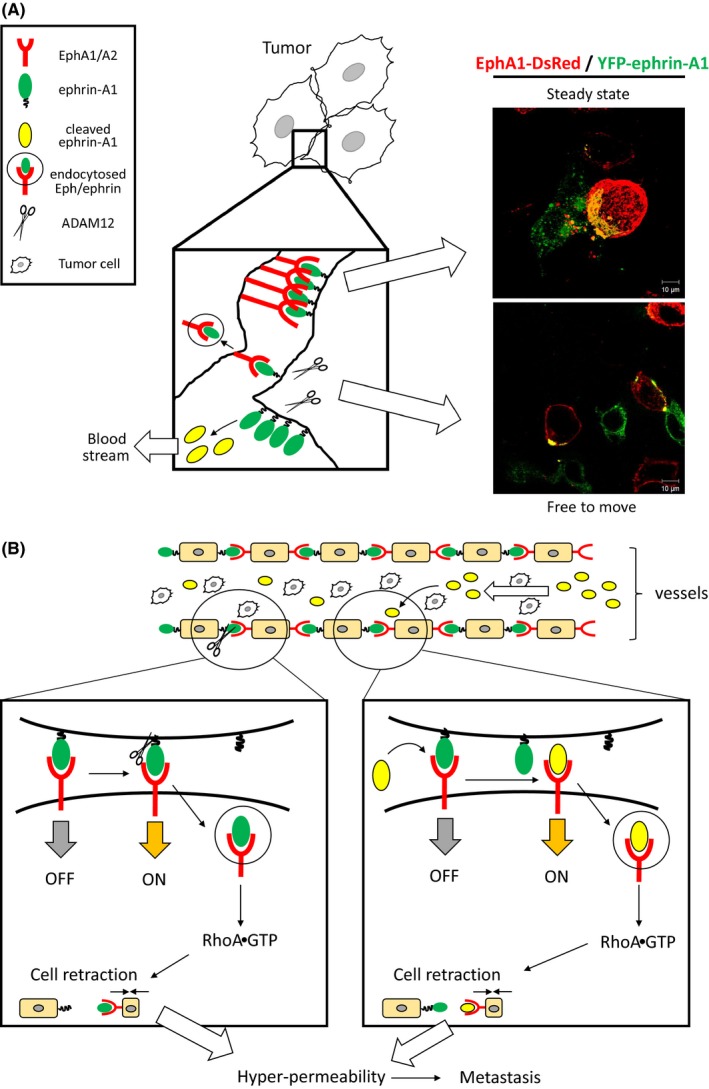Figure 3.

Role of the EphA1/A2 and ephrin‐A1 system in tumors and lung metastasis. A, Cell boundary formation by the Eph/ephrin system. The Eph/ephrin system provides cell‐cell contacts via receptor‐ligand interaction. Co‐culture of EphA1‐DsRed‐ and YFP‐ephrin‐A1‐ expressing cells (E‐cadherin‐negative HEK293 cells) induced boundary formation. The cells kept sitting together on a culture dish (upper panel of pictures). TGFβ‐induced ADAM12 activation leads to endocytosis of the Eph/ephrin complex by its protease activity. In our hypothesis, loss of Eph/ephrin‐mediated cell‐cell contacts render tumor cells free to move for metastasis (lower panel of pictures). Scale Bars: 10 μm. B, An enhancement of lung vascular permeability by breakdown of the Eph/ephrin system. ADAM12 localizes in vascular endothelial cells. Activated ADAM12 may cleave membrane‐anchored ephrin‐A1 joining to boundary formation. The cleavage induces endocytosis and RhoA activation leading to cell retraction. Cleaved ephrin‐A1 competes for pre‐existing Eph/ephrin interactions. Ephrin‐A1‐stimulated vascular endothelial cells are shrunk, and thereby enhances lung vascular permeability
